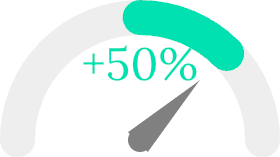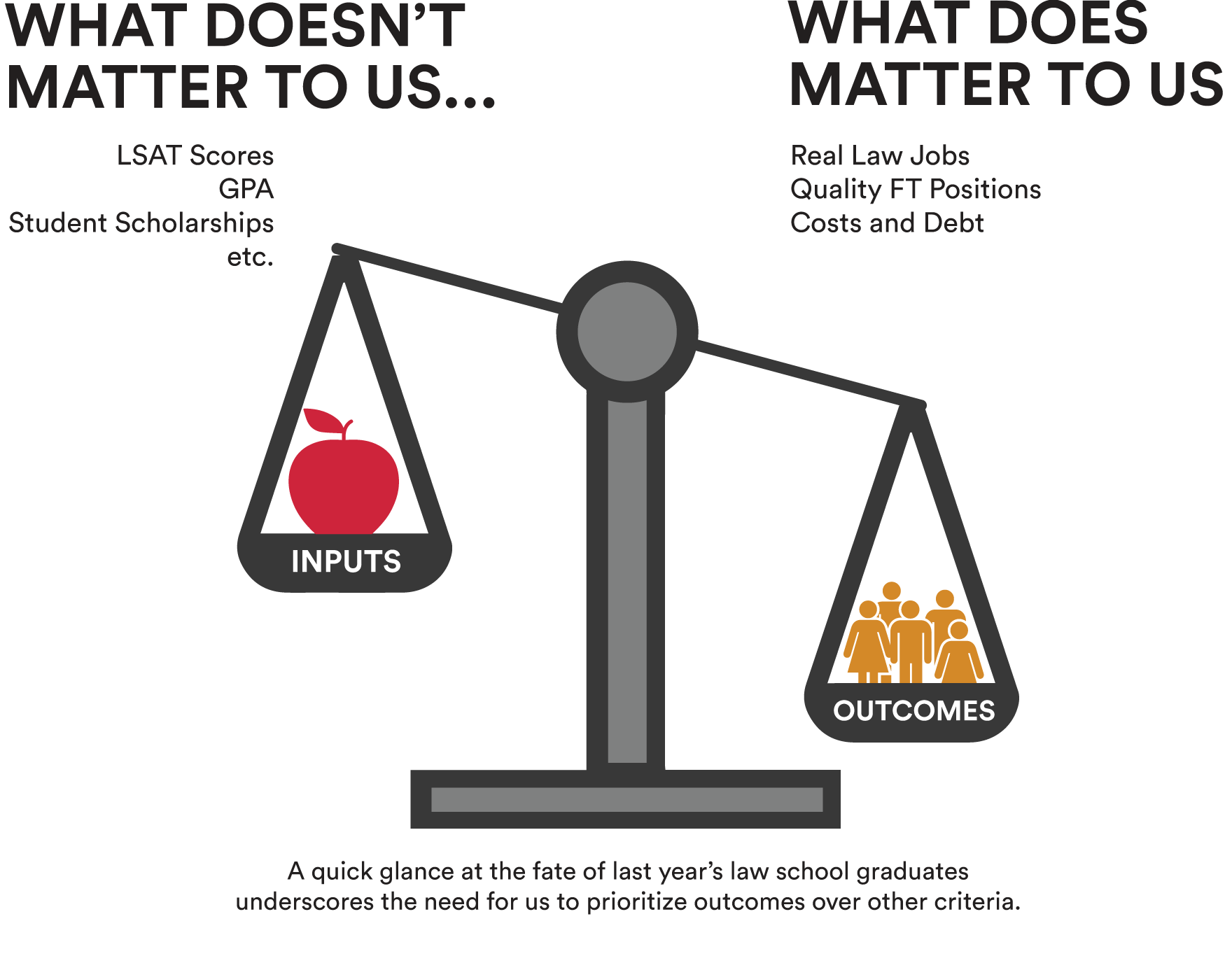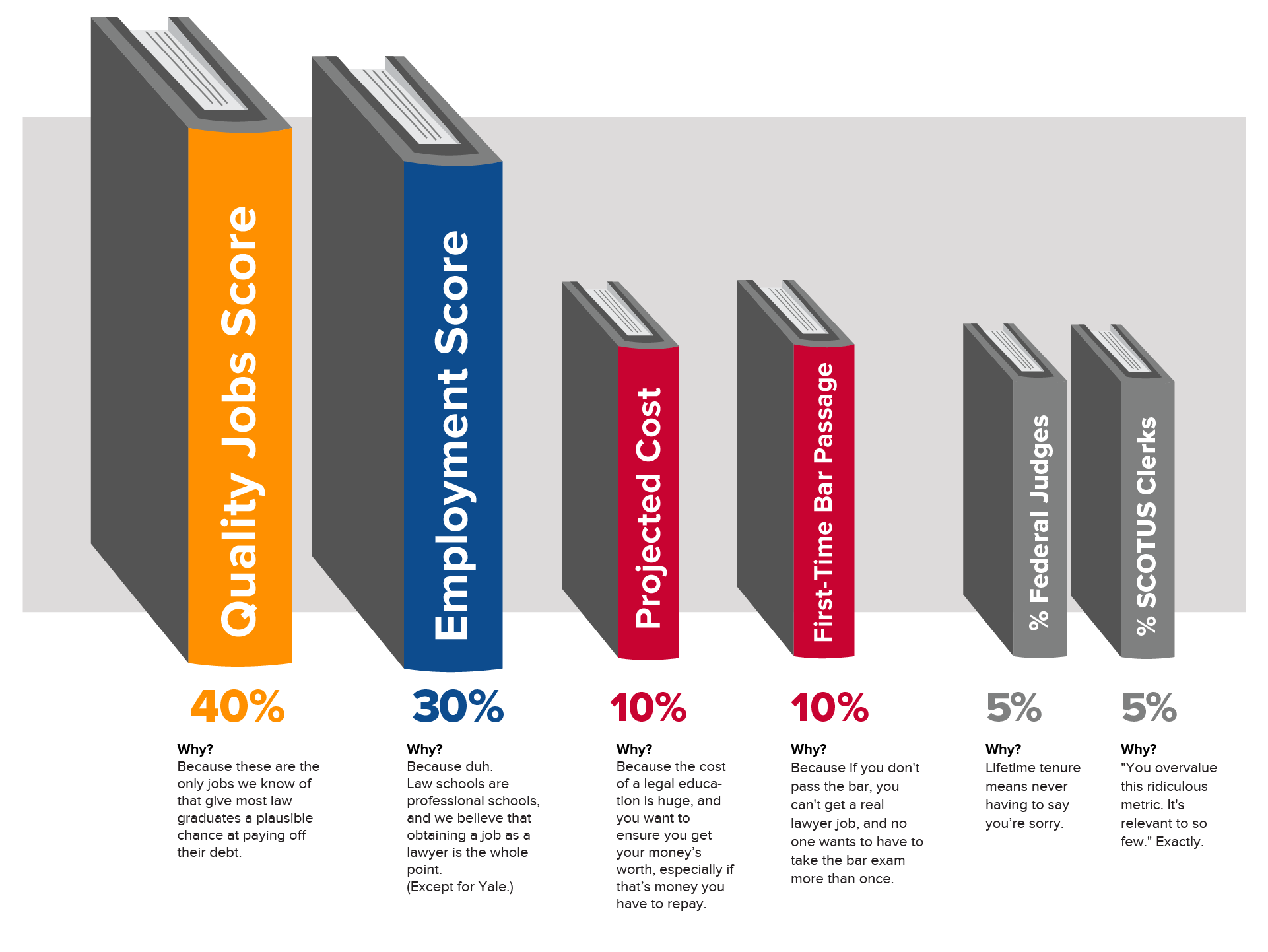Most people attend law school to obtain jobs as lawyers, or at least they should.
Law school student loans are real, and they are huge, so you’d best have a plan to pay them off on the back end of your J.D. Even if you are among the lucky few who can afford a legal education without taking on debt, the return on that tremendous investment of time and money should include the likelihood of landing a real job as a lawyer. That’s why we make employment the primary factor in our law school ranking. Check out our list for the law schools that put their graduates in the best position to get jobs.
Welcome to the 13th annual edition of the Above the Law Top 50 Law School Rankings. These are the only rankings to incorporate the latest ABA employment data concerning the class of 2024. The premise underlying our approach to ranking schools remains the same as ever: Given the steep cost of law school and the harsh realities of the legal job market, potential students should prioritize their future employment prospects over all other factors in deciding whether and where to attend law school. The relative quality of schools is a function of how they deliver on the promise of gainful legal employment.
While we analyzed data for all 194 ABA-approved schools, our ranking is limited to the top 50. We want to focus on “national” schools, the ones with quality employment prospects both outside of their particular region and/or for graduates who don’t graduate at the top of the class.
As always, the ATL Top 50 Law School Rankings prioritize the one thing that really matters: outcomes.
 For those with different priorities, check out the ATL Law School DIY where you can adjust the relative weights of 11 factors yourself to customize rankings based on your personal needs and goals.
For those with different priorities, check out the ATL Law School DIY where you can adjust the relative weights of 11 factors yourself to customize rankings based on your personal needs and goals.
Skills That Set Firms Apart
Legal expertise alone isn’t enough. Today’s most successful firms invest in developing the skills that drive collaboration, leadership, and business growth. Our on-demand, customizable training modules deliver practical, high-impact learning for attorneys and staff—when and where they need it.
The Rankings
See the 2024 rankings →How do law schools fare when assessed using this outcomes-based methodology?
| 2025 Rank | School | 2024 Rank | Change | Score |
|---|---|---|---|---|
| 1 | Duke | 3 | 2 | 85.93 |
| 2 | Cornell | 7 | 5 | 84.27 |
| 3 | U Chicago | 2 | -1 | 83.91 |
| 4 | U Virginia | 1 | -3 | 81.62 |
| 5 | U Penn (Carey) | 6 | 1 | 78.13 |
| 6 | Northwestern (Pritzker) | 8 | 2 | 77.69 |
| 7 | U Michigan | 4 | -3 | 77.37 |
| 8 | Yale | 13 | 5 | 76.58 |
| 9 | Columbia | 5 | -4 | 76.09 |
| 10 | Vanderbilt | 10 | 0 | 75.05 |
| 11 | Harvard | 11 | 0 | 74.6 |
| 12 | U Notre Dame | 9 | -3 | 74.55 |
| 13 | U Texas at Austin | 14 | 1 | 74.26 |
| 14 | Washington U in St. Louis | 12 | -2 | 73.63 |
| 15 | NYU | 19 | 4 | 68.91 |
| 16 | UC Berkeley | 25 | 9 | 68.9 |
| 17 | Boston College | 16 | -1 | 68.67 |
| 18 | USC (Gould) | 17 | -1 | 68.58 |
| 19 | U Illinois Urbana-Champaign | 44 | 25 | 68.4 |
| 20 | UCLA | 21 | 1 | 67.97 |
| 21 | Stanford | 15 | -6 | 67.74 |
| 22 | Georgetown | 18 | -4 | 67.72 |
| 23 | U Florida (Levin) | 22 | -1 | 66.34 |
| 24 | Fordham | 26 | 2 | 65.05 |
| 25 | U Alabama | 29 | 4 | 64.66 |
| 26 | Emory | 24 | -2 | 63.94 |
| 27 | Washington and Lee | 28 | 1 | 63.83 |
| 28 | Boston U | 23 | -5 | 62.37 |
| 29 | UNC | 31 | 2 | 61.9 |
| 30 | Wake Forest | 32 | 2 | 60.69 |
| 31 | U Georgia | 27 | -4 | 60.23 |
| 32 | SMU (Dedman) | 34 | 2 | 59.96 |
| 33 | Ohio State (Moritz) | 41 | 8 | 59.27 |
| 34 | U Houston | 36 | 2 | 58.52 |
| 35 | Howard University | 20 | -15 | 58.37 |
| 36 | Villanova | 40 | 4 | 57.59 |
| 37 | UC Irvine | 30 | -7 | 57.52 |
| 38 | U Minnesota | 37 | -1 | 57.35 |
| 39 | Florida State | 43 | 4 | 57.21 |
| 40 | Texas A&M | NR | N/A | 57.2 |
| 41 | Brigham Young | 42 | 1 | 56.97 |
| 42 | George Washington | 37 | -5 | 56.75 |
| 43 | U Iowa | 33 | -10 | 56.04 |
| 44 | U Colorado | NR | N/A | 55.97 |
| 45 | U Kansas | NR | N/A | 55.52 |
| 46 | Temple | 46 | 0 | 55.26 |
| 47 | UC Davis | NR | N/A | 54.62 |
| 48 | Baylor | 39 | -9 | 54.53 |
| 49 | William and Mary | 35 | -14 | 54.24 |
| 50 | Indiana U - Bloomington | NR | N/A | 53.8 |
 For those with different priorities, check out the ATL Law School DIY where you can adjust the relative weights of 11 factors yourself to customize rankings based on your personal needs and goals.
For those with different priorities, check out the ATL Law School DIY where you can adjust the relative weights of 11 factors yourself to customize rankings based on your personal needs and goals.
Let's put it simply:

What happened last year?
The Class of 2024
Total Law Grads: 38,937
Methodology
We prioritize employment outcomes above all else in comparing law schools. Therefore, these are the components of our rankings methodology:

Some further notes on methodology
QUALITY JOBS SCORE (40%)
This measures the schools’ success at placing students on career paths that best enable them to pay off their student debts. We’ve combined placement with the country’s largest and best-paying law firms (firms with 101+ attorneys) and the percentage of graduates embarking on federal judicial clerkships. These clerkships typically lead to a broader and enhanced range of employment opportunities. (Employment data from the American Bar Association.)
EMPLOYMENT SCORE (30%)
We only counted full-time, long-term jobs requiring bar passage (excluding solos and school-funded positions). Look, we know that there are some great non-lawyer jobs out there for which a J.D. is an “advantage.” It’s not as if these jobs don’t count; it’s that they can’t be compared in a meaningful way. The definition of “J.D. Advantage” changes from year to year and is based on a self-reported metric that defies independent third-party verification. One school’s apples are another school’s oranges, but we’re not going to count lemons. (Employment data from the American Bar Association.)
PROJECTED COST (10%)
The cost of a law school education matters not only to those students who take out loans to fund it, but also to those lucky enough to be able to pay for it outright. After all, law school is a major investment and how you view the return on that investment depends not only on the outcome (i.e., employment) but on how much you laid out to get there. And, because where you attend school plays a part in those expenses (e.g., three years living in New York City will leave a bigger hole in your bank account than three years in Lawrence, Kansas), we’ve also factored regional adjustments for cost of living into our scores for total cost. We’ve estimated the cost of three years of law school for full-time students starting in 2025 and then adjusted the scores for regional cost of living. (Data on current tuition, fees, and living expenses primarily from the American Bar Association.)
FIRST-TIME BAR PASSAGE RATE (10%)
If you want one of those full-time, long-term legal jobs that put you in the best position to pay off your law school debt, you’ll have to pass the bar exam. Even if a handful of states are considering licensing alternatives that don’t require the exam, for the most part, if you want to practice law at all, you need to pass the bar. And no one wants to have to sit through the bar exam more than once. Our formula factors in the percentage of each school’s first-time exam takers in 2024 who passed. (Bar passage data from the American Bar Association.)
SCOTUS CLERK & FEDERAL JUDGESHIP SCORES (5% EACH)
Though obviously applicable to very different stages of legal careers, these two categories represent the pinnacles of the profession. For the purposes of these rankings, we simply looked at a school’s graduates as a percentage of (1) all U.S. Supreme Court clerks (since 2020) and (2) currently sitting Article III judges. Both scores are adjusted for school size. Obviously, we are aware that for the vast majority of students, Supreme Court clerkships or the federal bench are simply not prospects. But for the students who do want to be judges and academics, this outcome represents a useful separating factor for the most elite schools. Some schools put you in robes, others can’t.


